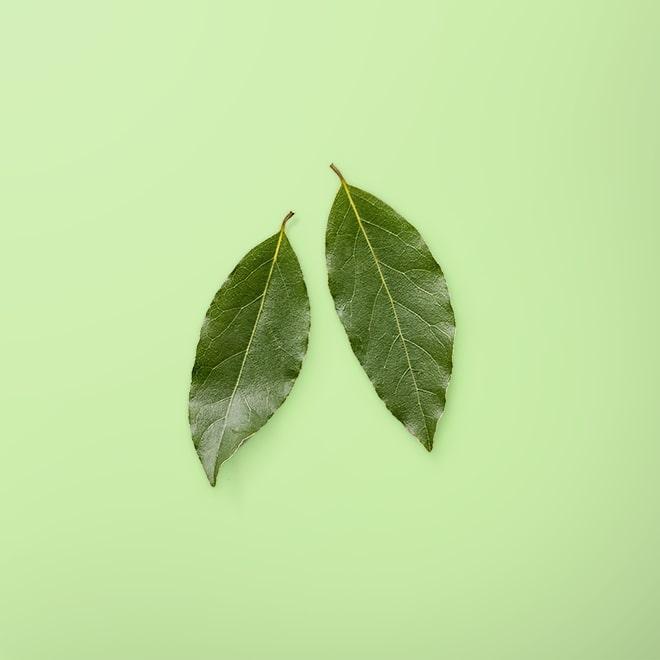Bay Leaf




Like rosemary, fennel, and thyme, the Greek and Romans used Bay Leaves as a symbol of accomplishment and greatness, forging the herb into a crown for the respected and honored, in the early 800-400 BC.
While it was a symbol of many things, it also had medicinal uses in ancient Greece, such as the oil of bay leaves assisted with the accelerated removal of pimples, lowered amount of pain, and had a general cure-all effect about it.
Although it is very centered around Mediterranean East and European cuisine, the bay leaves are actually indigenous to Asia Minor, and spread to Asia in the early 800s.
Fresh bay leaves are always preferable over dried bay leaves in terms of flavor and fragrance. Avoid the fresh bay leaves if it deviates from its standard vibrant green color. If bay leaves are fresh, wrap in a damp paper towel and store in the refrigerator to prevent dehydration. If bay leaves are dried, store in a container in a cool, dry place and can be used within six months.
Putting bay leaves near flour and grains keeps of weevils, making it a great repellant that is chemical free.
What contributes to bay leaves aroma and flavor is a chemical called eugenol (responsible for smell), menthol, and eucalyptus (responsible for taste).
Although it is the common rule that fresh herbs have stronger taste and aroma than its dried counterparts, using bay leaves 24-48 hours after taking it off the stem will result in the optimal flavors.
If you use fresh bay leaves and other herbs & spices that have a lot of liquids and do not want to have to deal with the remnants of these ingredients after the cooking process is complete, you can tie all the herbs together to form a bouquet garni using ordinary string or kitchen twine.
Like any herbs, bay leaves loses its flavor a short while after being cooked, therefore, unless it’s used in a bouquet garni to solely flavor the dish, it is best to add the bay leaves in at the last few minutes of the cooking process.
From various studies, bay leaves seem to help regulate sugar levels and reduce risk of cardiovascular disease.
Boiling bay leaves in water and soaking the water helps relieves a number of ailments, such as cough, infections, and bronchitis.
Bay leaves increase the process of sweating, which helps expel agents that cause fever and flus slightly faster.
Mashing bay leaves into a mush and rubbing it onto inflamed joints helps decrease the pain.
Corrections or improvements? Email us at
content@sidechef.com